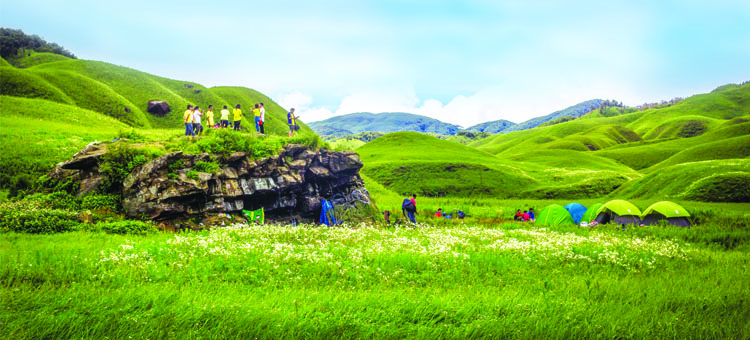There is no doubt promoting tourism in the North East is top priority for the Government of India (GoI). For one it offers a hand full of unexplored destinations brimming with exotic natural beauty and adrenalin pumping adventure, marketable with ease to the millennial traveller.
Secondly, targeting tourists from the ASEAN (Association of South East Asian Nations) countries is easier with an opened up North East as culturally and socially there exists age-old ties between the people. Thirdly, in the Buddhist axis of Lumbini, Sarnath and Bodh Gaya, inclusion of monasteries in Arunachal Pradesh and Sikkim could enhance traction.
The Ministry of Tourism (MoT) has sanctioned Rs. 1267.49 crore under Swadesh Darshan and Rs. 33.98 crore under PRASHAD (Pilgrimage Rejuvenation and Spiritual, Heritage Augmentation Drive) schemes respectively for North Eastern states till March 2018.
Under UDAN Regional Connectivity Scheme (Phase I), Deccan Air has bid successfully for connecting Imphal to Shillong, Silchar, Dimapur, Aizawl, Kolkata and Agartala. In Phase II, four helicopter operators have been granted the right to fly on select routes – Pawan Hans (to parts of Imphal and Guwahati); Zoom Air, Skyone and Spicejet (between Kolkata and parts of Arunachal Pradesh).
Flights have also been awarded to operators in Assam, Mizoram, Nagaland and Tripura. Funds to create tourism-friendly infrastructure and amenities, and ensuring air connectivity are going a long way in promoting tourism in the North East.
According to industry experts, North East tourism is expected to grow by 10-12 per cent in 2018-19. The new airport at Pakyong (Sikkim) will further make reaching the region easier. Tourists looking for new experiences in adventure, nature, lifestyle, culture and cuisine seem to be flocking to the North East.
In the last couple of years, YoY growth of bookings on OTA platforms have witnessed 35-40 per cent and some North Eastern states have recorded even 100-120 per cent. Apart from millennials, many solo women travellers also find the region a relatively safe area to explore. MoT’s proposal to open up new entry points into India through Sikkim and Arunachal Pradesh is under ‘active consideration’ of the Home Ministry.
Plans to develop tourist facilities while simultaneously relaxing or removing, where possible, the existing ‘inner line permit’ mechanism needed for entering India through the North East are also afoot. Tourism in the North East aligns well with GoI’s ‘Act Easy’ policy. Improving connectivity in North East states is the key to the success of the ‘Act East’ policy that seeks to strengthen India’s ties with countries in the ASEAN region.
Recently, GoI entered into an agreement with Airbnb to create hospitality micro-entrepreneurs across key destinations in the North East. These MoUs with Airbnb are a step towards doubling tourist growth rate in the next three years, by creating more sustainable accommodation options and enhancing the hospitality service standards in the region.
At Destination Reporter, we want to tell stories from the North East and are kick starting a series ‘North East Escapades’. In this issue, we explore Nagaland and discover what makes the land of festivals so compelling. (Page 20)





